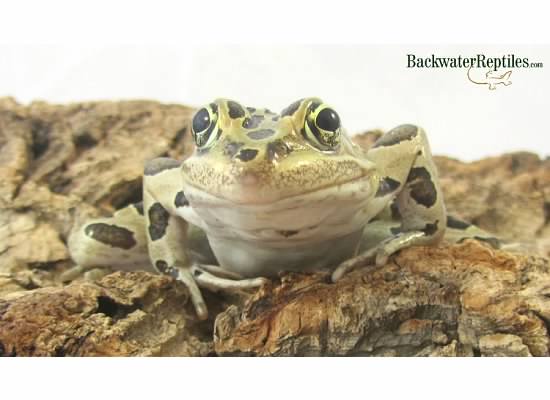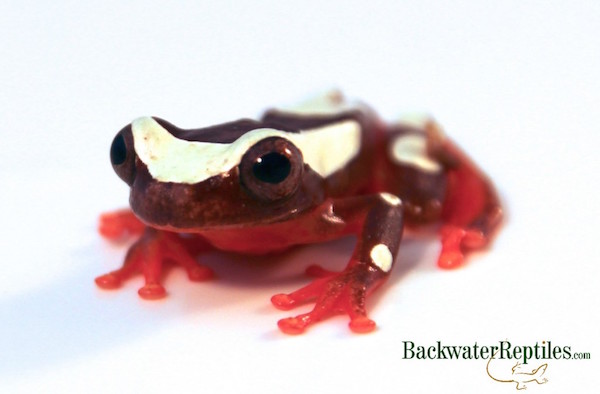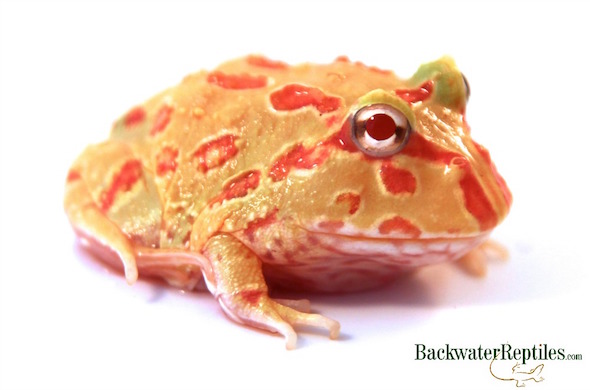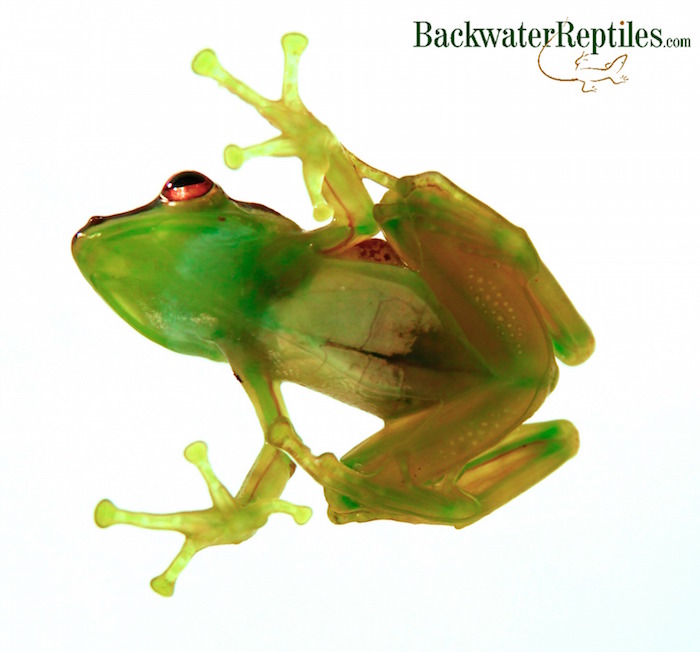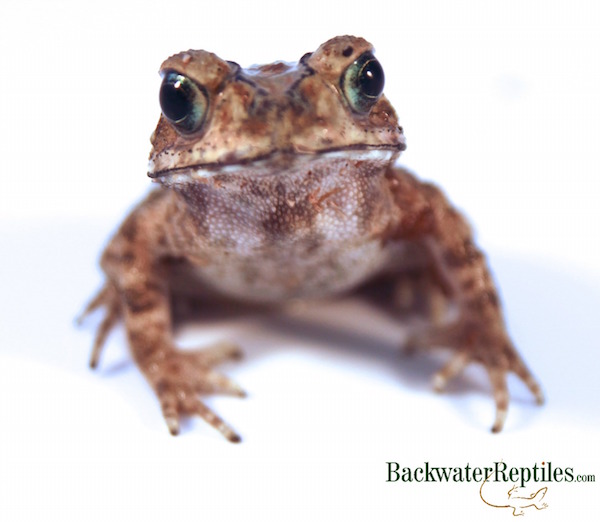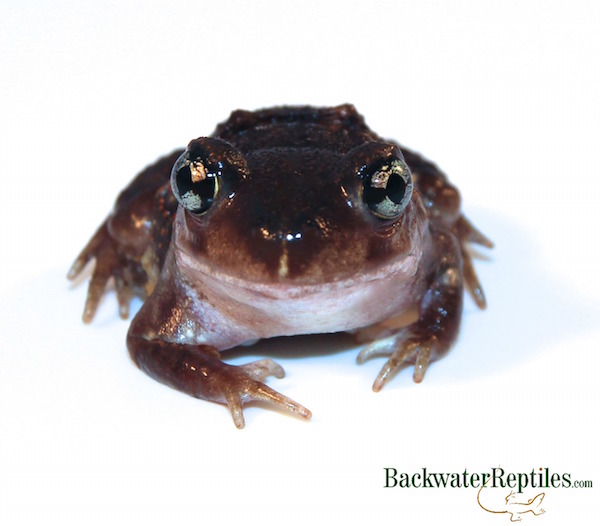The absolute biggest frog in the entire world is the Goliath Frog (Conraua goliath). It can reach up to 12 and a half inches long (snout to vent) and weigh upwards of seven pounds! However, we’re not including this behemoth frog on our top four biggest pet frogs list because they are currently endangered and due to the strict exportation regulation of this species, we don’t recommend keeping them as pets.
So now that we’ve gotten the Goliath frog out of the way, read on to find out more about our top four biggest pet frog species.
Gladiator Tree Frog (Hypsiboas boans)
This is a frog known by many names – the giant tree frog, the rusty tree frog, the giant gladiator tree frog – to name a few.
The Gladiator grows to around 4 inches long snout to vent. It gets its name because the males possess a bony spike on their hands that they use in combat with other males when it comes to defending territory or fighting for a mate.

Gladiators can be grey or brown in color. They possess stripes, bars or blotches on their backs. Their feet have a lot of webbing and oversized toe pads.
Like all tree frogs, the Gladiator is arboreal and as such its enclosure should support its climbing habits. These frogs are also fond of adhering to the glass walls of their tanks, giving their owners a view of their underbellies.
Cuban Tree Frog (Osteopilus septentrionalis)
The Cuban tree frog makes our list at number three because it is commonly known to be the largest tree frog in North America.
Although these frogs might not be the largest in terms of weight or girth, they are definitely the longest tree frog in North America, reaching over five inches long from snout to vent when fully grown.
Most frogs that grow to be this long will also grow in diameter (i.e. their bellies will bulge and they will be quite wide animals), but the Cuban tree frog is actually very slender for a frog of its size. This is probably because they spend a lot of time in trees and weighing too much would make it tough for them to cling to a perch or leaf while being so high off the ground.

Cuban tree frogs are originally from Cuba, as their name suggests, but have become an invasive species in the U.S. They are sometimes considered a nuisance in their natural habitat because the males actually bark very loudly in the mating season.
A single Cuban tree frog can be housed comfortably in a 15 to 20 gallon tank. Due to their arboreal lifestyle, the tank should be able to accommodate vertical space (i.e. be taller than it is wide) because your Cuban tree frog won’t spend a lot of time on the ground.
Pacman Frog (Ceratophrys cranwelli)
Pacman frogs are commonly sold as babies that are no larger than a quarter, but boy, do they grow fast! Pacmans have almost insatiable appetites and will not only expand in terms of length, but girth as well. In fact, many Pacman frog owners have to watch their frog’s weight and feed them a low-fat diet because these frogs can and will overeat if they’re not watched.
When fully grown, female Pacman frogs can be around four to seven inches long. Male frogs are slightly smaller, maxing out at around four inches.

Pacman frogs are very popular pets not only because they are very appreciative eaters and put on a show at meal time, but because they are bred to be a variety of different colors. Captive breeding has produced some truly colorful Pacman frog morphs.
Because Pacmans are not picky eaters, we feed ours crickets as their staple food, and supplement with meal worms, night crawlers, and roaches. Occasional wax worms or horn worms are nice juicy treats, but just be sure to feed these to your Pacman in moderation.
Pixie Frog (Pyxicephalus adspersus)
Pixie frogs (AKA Giant African Bullfrogs) are true behemoths. These frogs not only grow long, but they grow hefty. It’s not unheard of for them to be large enough to eat adult mice!
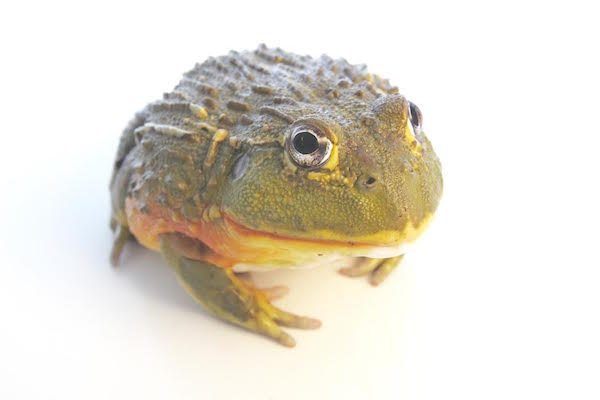
Male Pixies can reach lengths up to ten inches, while females will get to around five inches long, which is still impressive! Males have been recorded to weigh as much as two pounds, which might not seem like much, but in terms of frogs, this is really heavy!
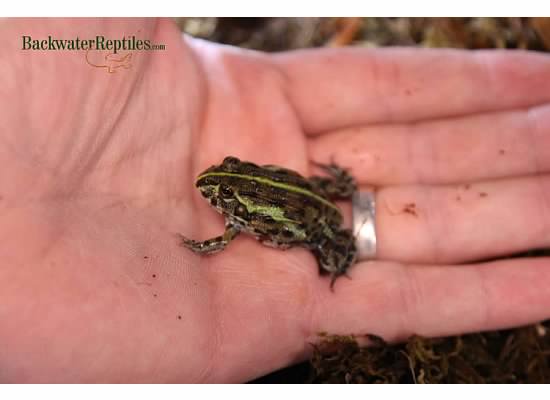
Pixies are burrowers, so we recommend substrate that holds moisture and allows for this behavior. Coconut fiber is ideal. They will probably hide most of the time, but you better believe that when its lunch or dinner time, the Pixie comes running…or rather, hopping. We feed ours low-fat diets that include crickets, mealworms, and roaches since it’s so easy for these frogs to become obese.
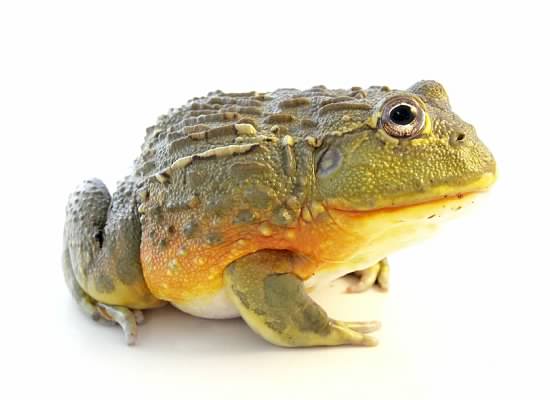
Conclusion
All large frogs have complimentary large appetites which makes feeding time a fun and entertaining experience.
We would highly recommend any of these frogs for a pet. If you think you’re prepared to adopt any of these great frog species, Backwater Reptiles has many large frog species for sale.

